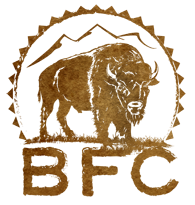National Park Service Fails Wildlife, Caters to Livestock Interests
For Immediate Release:
January 23, 2006
Contact:
Stephany Seay (406) 646-0070
Gardiner, Montana - The National Park Service (NPS) has captured a total of 651 of America's last wild buffalo since January 12. To date, Yellowstone National Park officials have sent nearly 400 (388) wild bison to slaughter, including forty-one bison calves and one hundred bull bison; bulls and calves pose zero risk of transmitting the livestock disease brucellosis.
The NPS has sent 86 wild bison calves to Montana's Corwin Springs bison quarantine facility, which, according to the Park Service, has reached full capacity. Henceforth, all captured calves will not be tested for brucellosis antibodies and will be sent directly to slaughter.
175 bison remain in the Stephens Creek Capture Facility, located within the boundaries of Yellowstone National Park. One wild bison calf died in the Stephens Creek facility last week after its horns were broken off as it was processed through the trap. A female bison also died in the facility on Thursday.
US Homeland Security agents have been escorting the country's native wild bison to slaughter facilities in Montana and Idaho, some as far away as 500 miles.
"We have entered the bloodiest buffalo slaughter since the winter of 1996-1997," said Dan Brister of the Buffalo Field Campaign.
"The Park can't hide from the American people behind the excuse of the Plan; they are in the shameful spotlight for perpetuating the butchering of America's last wild buffalo. They are in contempt of the U.S. Organic Act and are disrespecting everything the U.S. National Park System stands for."
The NPS justifies Yellowstone's participation in the harassment and slaughter of the country's last wild bison under the Interagency Bison Management Plan (IBMP). The Plan was set up to protect and maintain a wild population of Yellowstone bison and protect Montana's livestock industry from the perceived threat of brucellosis transmission from wild buffalo to domestic cattle.
"Wild bison migrate and that's a natural fact. By staunching this phenomenon the Park Service is harming, not protecting them," said Stephany Seay of the Buffalo Field Campaign. "The world's first national park should be celebrating and defending bison migration, instead they are punishing it, even knowing there's never been a transmission of brucellosis from wild bison to cattle. "
State and federal agencies tout the Plan as evidence that no brucellosis transmissions between wild bison and cattle have occurred. However, even prior to the inception of the IBMP there has never been a documented case of brucellosis transmission from wild buffalo to cattle, even where they have coexisted for decades (Grand Teton National Park). Brucellosis is a European livestock disease.
In the past ten years, 2,666 wild buffalo have been killed by state and federal agents - more than half of the existing herd - and thousands continue to be denied access to critical habitat. There are no cattle near the Park's western boundary, and less than 200 on the northern boundary.
Some of the bison captured by the Park Service migrated onto or near the Royal Teton Ranch, owned by the Church Universal and Triumphant (CUT). The ranch is located within North America's largest wildlife migration corridor directly adjacent to Yellowstone's northern boundary. In 1998 U.S. taxpayers spent $13 million on conservation easements to allow wild bison to access these lands. The government never finalized the deal.
BFC strongly opposes the Interagency Bison Management Plan and advocates for more sensible risk management, including fencing and vaccination of domestic cattle in the Montana.
"The Plan doesn't say the Park Service must kill bison, it simply states that it may," said BFC's policy and legal coordinator Josh Osher. "The Park Service has the option not to kill. It's an adaptive Plan that is designed to work for bison, not against them."
Montana reinstated its first bison hunt in fifteen years in November. Phase I of the hunt ended January 15, and phase II began January 16 and lasts until February 15. Eighteen non-Indian hunters killed bison in the first phase. Only three of eight Indian tribes chose to participate. Thirteen bison have been shot in Gardiner since opening day of phase II.
The Buffalo Field Campaign (BFC) will oppose Montana's hunt until bison are allowed year-round access to Montana habitat without facing harassment, capture, slaughter, quarantine or shooting, and so long as the Montana Department of Livestock maintains any level of authority in wild bison management.
"On one side of the Yellowstone river, bison are being gunned down by hunters, while just across the river, our National Park Service is conducting wholesale slaughter," said BFC's Mike Mease. "It is inexcusable that an agency sworn to protect wildlife is harming buffalo to appeal to one special interest group. Montana's livestock industry is the sole beneficiary of the Plan."
Buffalo Field Campaign is the only group working in the field, everyday, to stop the slaughter of the wild Yellowstone buffalo. Volunteers defend the buffalo on their native habitat and advocate for their protection.







